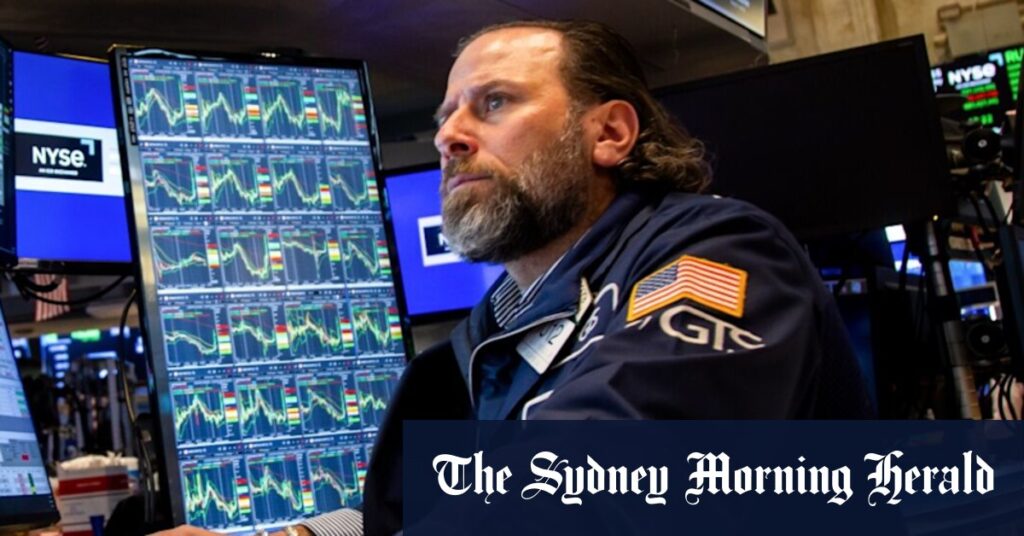
The Australian sharemarket experienced a sharp decline after new data revealed an unexpected rise in inflation during the September quarter. This development has significantly reduced the likelihood of an interest rate cut at the Reserve Bank of Australia’s upcoming meeting on Melbourne Cup Day.
By midday AEDT, the S&P/ASX 200 had dropped 59.80 points, or 0.7 percent, to 8952.20, with financial stocks leading the downturn. This follows a 0.5 percent decline on Tuesday. In contrast, the Australian dollar saw a slight increase of 0.3 percent, reaching US66.01¢.
Inflation Data and Economic Implications
The Australian Bureau of Statistics reported that headline inflation rose to 1.3 percent in the three months leading to September, a significant increase from the June quarter’s 0.7 percent. This pushed the annual rate of price growth from 2.1 percent to 3.2 percent. Meanwhile, trimmed mean inflation, which excludes the most volatile price changes and is closely monitored by the Reserve Bank, stood at 1 percent for the quarter and 3 percent annually, nearing the top of the bank’s 2 to 3 percent target range.
In its recent monetary policy statement, the Reserve Bank had anticipated headline inflation to reach 3 percent by year-end, with trimmed mean inflation expected to decrease slightly from 2.7 percent to 2.6 percent. The latest inflation figures are crucial for the central bank’s upcoming rate decision.
Market Reactions: Banking and Retail Sectors
Banking stocks were heavily impacted by the inflation report, with the sector comprising a third of the ASX’s total market value. The Commonwealth Bank of Australia, the largest stock, fell by 1.3 percent. National Australia Bank decreased by 1.6 percent, Westpac by 1.2 percent, and ANZ Bank by 0.4 percent. Wesfarmers, a major retailer, also saw a decline of 1.3 percent.
Despite the overall negative market sentiment, Woolworths shares rose by 1.5 percent. This gain occurred even as the supermarket chain reported weaker-than-expected sales for the September quarter. CEO Amanda Bardwell acknowledged the company’s performance was “below our aspirations,” with food sales increasing by 2.2 percent, missing analyst predictions. However, Jarden analyst Ben Gilbert noted “early green shoots,” citing a 3.2 percent rise in October food sales, suggesting potential recovery.
Energy and Resource Sectors
Oil and gas companies, including Woodside and Santos, continued to decline as oil prices fell due to oversupply concerns. West Texas Intermediate dropped by 1.9 percent, settling near $US60 a barrel, marking the steepest daily drop in over two weeks. Woodside’s shares fell by 1.2 percent, while Santos decreased by 0.8 percent.
Conversely, mining giants BHP and Rio Tinto experienced slight gains, with increases of 0.7 percent and 0.2 percent, respectively. Gold miners also rebounded after recent losses, with Northern Star climbing 2.7 percent, Evolution Mining up 2.9 percent, and Newmont rising 1.8 percent as gold prices steadied around $US3950 an ounce.
Global Market Context
On Wall Street, the S&P 500, Dow Jones, and Nasdaq all reached record highs for a third consecutive day, with modest gains of 0.2 percent, 0.3 percent, and 0.8 percent, respectively. Investors are closely watching for upcoming events, including the Federal Reserve’s interest rate decision and key earnings reports from major US companies.
Tech giants Apple and Microsoft saw share price increases, both reaching a valuation of $US4 trillion, joining Nvidia in this exclusive club. Clark Bellin of Bellwether Wealth commented, “We expect another strong round of megacap tech earnings reports, given the relentless demand for AI technology and infrastructure.”
Amazon announced a 1 percent rise in shares after revealing plans to cut 14,000 corporate jobs while increasing AI investments. Meanwhile, United Parcel Service and PayPal reported stronger-than-expected profits, boosting their stock prices by 8 percent and 3.9 percent, respectively.
Looking ahead, the Federal Reserve’s decision on interest rates is highly anticipated. A potential rate cut could be announced, marking the second reduction this year. Investors are eager for any hints from Fed Chair Jerome Powell regarding future monetary policy moves, especially given the current inflationary pressures.
The unfolding economic landscape presents both challenges and opportunities, as markets navigate the complexities of inflation, monetary policy, and global economic dynamics.





